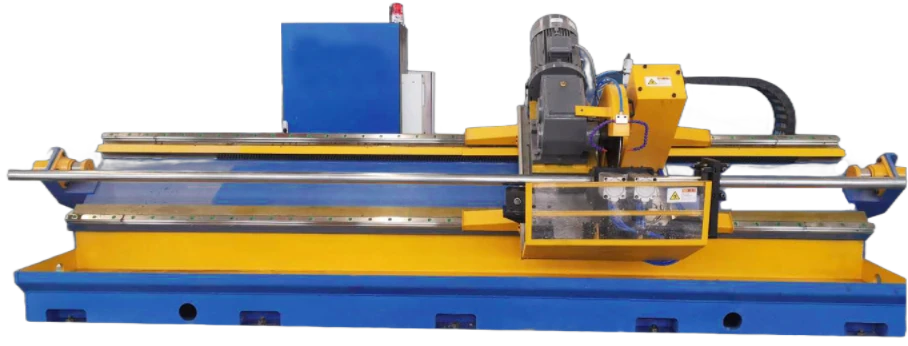Exploring the Benefits and Applications of Two-Roll Mills in Material Processing
Understanding Two Roll Mills The Unsung Heroes of Material Processing
In various industries, the need for effective material processing is a fundamental requirement. Among the many specialized machines designed for this purpose, two roll mills stand out as versatile workhorses. These machines are widely used in the rubber and plastic industries for mixing, kneading, and refining various materials. This article delves into the intricacies of two roll mills, their functioning, applications, and significance in modern manufacturing processes.
The Anatomy of Two Roll Mills
At its core, a two roll mill consists of two horizontally mounted rolls that rotate in opposite directions. The rolls, typically made of heavy-duty steel, may vary in diameter and length, depending on the specific application and the materials being processed. The distance between the rolls can be adjusted to control the thickness of the material being processed, making it adaptable for a variety of tasks.
The operation of a two roll mill is based on the principle of shearing and compression. As the rolls turn, they create a continuous flow of material that is pulled into the gap between them. The friction between the rolls and the material causes heat to be generated, which softens the material, making it easier to manipulate. This heat generation is a crucial factor in the processing of thermoplastics and elastomers, allowing for their physical properties to be altered during mixing and refining.
Key Functions and Applications
Two roll mills perform several critical functions in material processing. Primarily, they are used for the mixing of various additives with base materials such as rubber and plastics. The ability to achieve homogeneous mixtures is essential for ensuring the quality and performance of the end product. Industries that heavily rely on two roll mills include rubber manufacturing, plastics processing, and even food production, where precise mixing can significantly impact the final product's properties.
In rubber manufacturing, for instance, two roll mills are used to mix raw rubber with fillers, accelerators, and other additives to produce materials that meet specific performance standards. The uniformity achieved through a two roll mill is vital for ensuring consistent product quality, which can directly affect the safety and durability of products such as tires, belts, and hoses.
two roll mill

In the plastics industry, the application of two roll mills extends beyond mixing. They are also utilized for the development of compounds that exhibit specific characteristics, such as flexibility, rigidity, or resistance to chemicals. Furthermore, two roll mills can be used for laboratory-scale formulations, allowing researchers and developers to experiment with new material combinations before scaling up to production levels.
Advantages of Two Roll Mills
The advantages of two roll mills are numerous. One of the most significant benefits is their efficiency. These machines can process large quantities of material in a relatively short amount of time, which is crucial for high-volume production environments. Additionally, their design allows for easy maintenance and clearance, ensuring that downtimes are minimized.
Another noteworthy feature is the ability to control the shear rate and temperature within the mill, which can be critical for optimizing the properties of the final product. By adjusting the roll speed and the gap between the rolls, operators can fine-tune the processing conditions to suit specific materials and applications.
Moreover, two roll mills are environmentally friendly. The closed-loop design of many models minimizes waste and allows for the recycling of excess materials, which aligns with the growing emphasis on sustainable manufacturing practices.
Conclusion
Two roll mills are vital machines that play an indispensable role in the processing of rubber, plastics, and other materials. Their ability to provide thorough mixing, customization in material properties, and operational efficiency makes them a preferred choice in various industrial applications. As industries continue to evolve and emphasize sustainability, innovation, and efficiency, the significance of two roll mills will only increase, solidifying their place as unsung heroes in the world of material processing. Understanding their capabilities not only highlights their importance in current manufacturing practices but also paves the way for future advancements in technology and material science.
-
High Frequency Straight Seam Welded Pipe Production Line-BzZhou Xinghua Machinery Equipment Manufacturing Co., LTD.|line pipe steel&welded gas pipeNewsJul.30,2025
-
High Frequency Straight Seam Welded Pipe Production Line-BzZhou Xinghua Machinery Equipment Manufacturing Co., LTD.|High Precision&Automated SolutionsNewsJul.30,2025
-
High Frequency Straight Seam Welded Pipe Production Line - BzZhou Xinghua Machinery Equipment Manufacturing Co., Ltd.NewsJul.30,2025
-
High Frequency Straight Seam Welded Pipe Production Line-BzZhou Xinghua Machinery Equipment Manufacturing Co., LTD.|Precision Welding, High EfficiencyNewsJul.30,2025
-
High Frequency Straight Seam Welded Pipe Production Line|BzZhou Xinghua|Precision Welding&EfficiencyNewsJul.30,2025
-
High Frequency Straight Seam Welded Pipe Production Line - BzZhou Xinghua|Precision Engineering&EfficiencyNewsJul.30,2025


